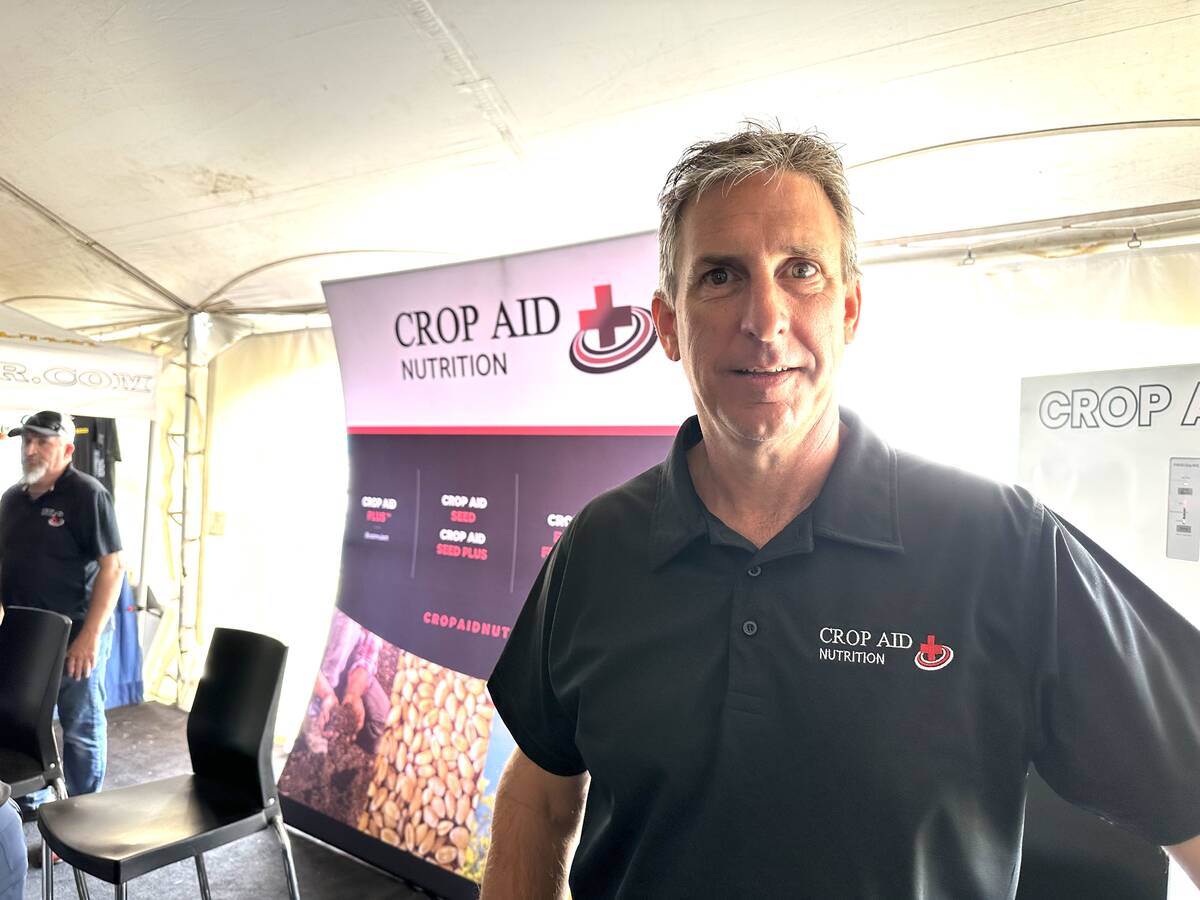It’s smaller than a mosquito, but more of a headache for Prairie farmers — wheat midge might look innocuous, but it can cause significant crop damage in Western Canada. Since midge-tolerant spring wheat varieties have become widely available, midge scouting has become a thing of the past for many Prairie farmers. However, with only one variety of midge resistant durum (AAC Marchwell) on the market, many durum growers still need to keep an eye out for midge. As well, soft spring wheat growers are also being asked to get out and scout and spray for midge this season (see further down).
Read Also

New soil treatment targets saline patches in fields
Crop Aid SS is a Saskatchewan-made spray that’s intended to help farmers manage saline soils by leaching salts away from the root zone.
This year’s midge forecast isn’t bad. According to John Gavloski, Manitoba Agriculture entomologist, populations have been relatively low in the province over the last few years. But Gavloski still recommends scouting as individual fields could still see damage.
Midge scouting happens in a “very small window” in early July, he says. Wheat is only susceptible to midge from the time the head emerges from the boot to anthesis, after which the chemical profile of the grains changes and they are no longer an attractive host for midge.
Producers who get their wheat in the ground early may not have to contend with the pest at all, says Gavloski, if their wheat has already flowered by the first week of July.
“Later-seeded fields will be in that vulnerable stage — that will be the highest risk wheat, so producers should focus their scouting on those fields.”
Producers often find scouting for midge to be a chore as it has to happen around sunset, when the bright orange pest becomes active.
“The problem is our thresholds are all based on the number of wheat midge per head, so to really do a fair job of assessing if the field is at risk, you need to be out there counting adults per head.”
What to look for
Wheat growers wanting optimum grades should look for one adult midge per eight to 10 heads during the susceptible period. If you care less about grade and more about yield, drop the figure to one adult midge per four to five heads.
This math can be challenging in the field; midge don’t stay put once they’re out and about in the evening. Gavloski recommends focusing on a group of wheat heads rather than looking at just one or two.
“If you scout enough areas you’ll get a good sense of how abundant they are. If you’re having trouble seeing them you probably don’t have an issue,” he says.
When scouting, producers should keep an eye out for macroglenes penetrans, a small black parasitic wasp that naturally keeps wheat midge in check.
For most farmers, mid-tolerant varieties and good rotations are the best defenses. There are only two chemical options for controlling wheat midge, and both are Group 1B insecticides. The active ingredient chlorpyrifos is sold as Lorsban, Pyrinex, Nufos, Citadel, Warhawk, MPOWER, Krypton and pyrifos. The active ingredient dimethoate is sold as Lagon and Cyclon.
Scout your soft white wheat
When researchers found that the midge-resistant Sm1 gene occurs naturally in many varieties of soft white wheat, the industry immediately began asking soft white wheat growers to add a refuge of a soft white variety that doesn’t contain the gene (the variety AC Andrew). Adding this refuge will help ensure that midge populations don’t develop tolerance to the Sm1 gene, keeping our varieties of midge-tolerant spring wheat and durum viable for as long as possible.
Because this information came out a little late in the spring, many soft white wheat growers may not have had a chance to add a 10 per cent refuge of AC Andrew to their seeding plans. If this is the case on your farm, the Midge Tolerant Wheat Stewardship Team urges you to be especially vigilant in your scouting and spraying this year. – Leeann Minogue
















